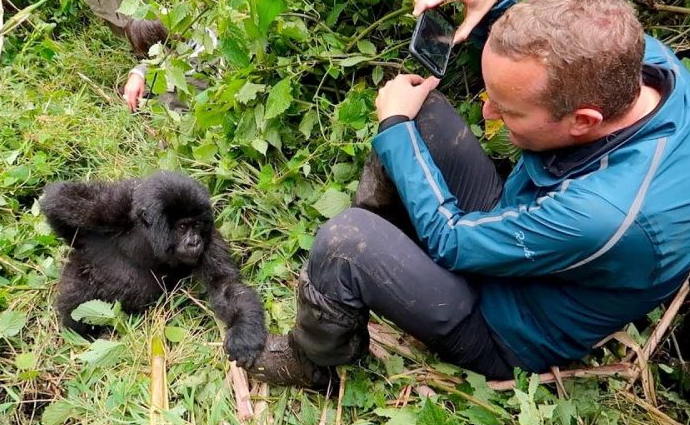Title: How Do Gorillas Respond to Human Interaction?
Introduction
Gorillas, our close evolutionary cousins, stir curiosity and admiration worldwide. Understanding how they respond to human interaction is crucial not only for wildlife conservation but also for enhancing our appreciation of these majestic creatures. This insight can improve encounters in zoos, sanctuaries, and even in the wild, promoting positive experiences for both gorillas and humans.
The Importance of Social Behavior
Gorillas are highly social animals, living in groups known as troops. Their interactions can range from playful to protective, reflecting a complex emotional landscape. When humans approach, gorillas may respond in various ways depending on past experiences, environmental factors, and individual personalities. Some may exhibit curiosity, approaching to investigate while others might retreat, signaling discomfort. This varied response illustrates the importance of understanding their social cues to foster respectful and enriching interactions that benefit their well-being.
Building Trust with Gentle Approaches
Establishing trust with gorillas requires patience and a gentle approach. In captive environments like zoos, keepers often spend time observing gorillas and learning their preferences. For instance, slow movements and calm voices can help ease the animals’ anxiety, encouraging them to engage. Interactive experiences like feeding or enrichment activities can also enhance trust and promote positive interactions. It’s important to remember that every gorilla is unique, and understanding their individual traits is essential for fostering deeper connections.
The Role of Education in Conservation
Education plays a pivotal role in how humans interact with gorillas. Awareness about their behaviors, habitats, and the threats they face can cultivate empathy and motivation for conservation efforts. Programs that educate the public about responsible wildlife tourism and the importance of preserving natural habitats can lead to more respectful interactions with gorillas and other wildlife. By promoting conservation strategies and understanding the impact of human activities, we can contribute to protecting these magnificent creatures and their environment.
Conclusion
Gorillas provide us with a unique window into the social complexities of our closest relatives in the animal kingdom. By understanding their responses to human interaction—rooted in their rich social dynamics and need for trust—we can foster better encounters in various settings. Take the time to learn more about gorillas and consider how your choices and actions can positively influence their world. Together, we can ensure a brighter future for these incredible animals.

